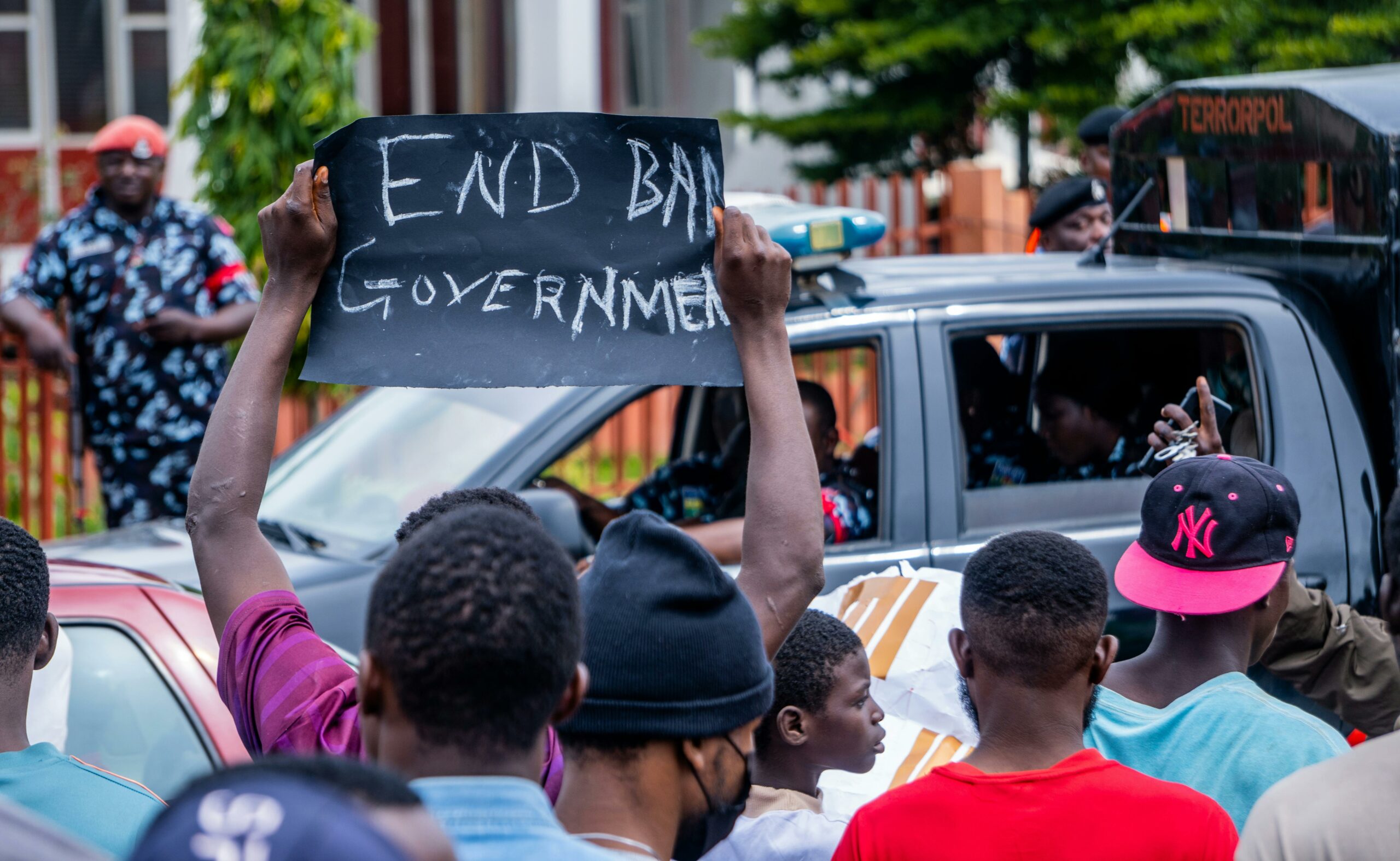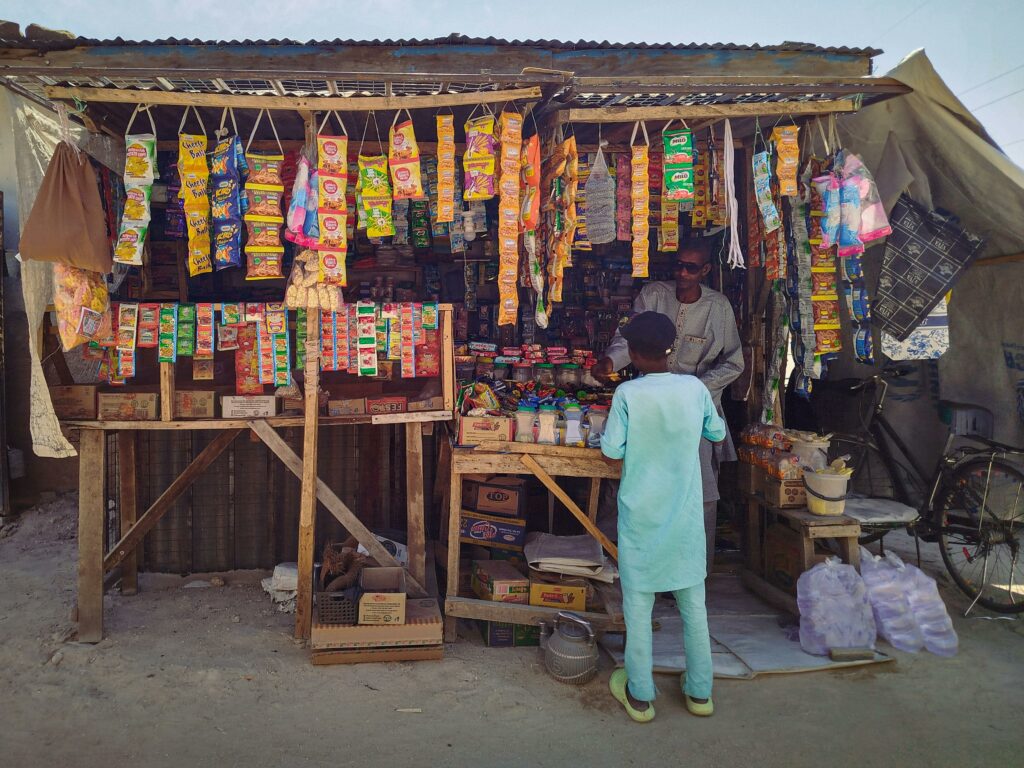Research Project Proposal: The Interplay of Governance, Infrastructure Sustainability, and Funding Attractiveness in Africa

Project Information
Project Details
The Interplay of Governance, Infrastructure Sustainability, and Funding Attractiveness in Africa
Introduction to the Literature Review
This literature review critically examines existing papers on the complex relationships between governance, infrastructure development outcomes, and the attraction of affordable financing in African countries. It aims to establish the theoretical underpinnings of the research, identify key debates, and pinpoint critical knowledge gaps that the proposed study intends to address. The review is structured around the three main causal links posited in the overarching research question: (1) how governance deficiencies lead to unsustainable infrastructure, (2) how unsustainable infrastructure deters affordable funding, and (3) potential strategies to break this negative cycle.
- The Pervasive Challenge of Infrastructure Deficit in Africa
Africa’s persistent infrastructure deficit is widely recognized as a major impediment to economic growth, poverty reduction, and regional integration (African Development Bank, 2023; Chakamera & Alagidede, 2018). Reports consistently highlight the immense funding gap, with estimates suggesting that the continent requires between $130 billion and $170 billion annually in infrastructure financing, yet only approximately $80 billion is committed (AUDA-NEPAD, 2025; African Development Bank, 2023). This deficit impacts various sectors, leading to higher operational costs for businesses, reduced productivity, and limited access to essential services like electricity, clean water, and adequate transportation (Afrobarometer, 2024; Uche & Anyanwu, 2016). The continent’s urbanization further exacerbates these challenges, placing immense pressure on already strained urban infrastructure and governance capacities (UN-Habitat, 2014; OpenEdition Journals, 2025).
- The Causal Link: Governance Deficiencies and Unsustainable Infrastructure
A significant body of literature points to governance as a critical determinant of infrastructure project success and sustainability in Africa. Poor governance often manifests in a myriad of ways throughout the project lifecycle, from planning to execution and maintenance, ultimately leading to suboptimal outcomes.
Corruption and Lack of Transparency: Corruption is frequently cited as a primary driver of infrastructure project failure, leading to inflated costs, substandard materials, and the selection of projects based on rent-seeking rather than genuine developmental needs (Transparency International, various years; Eja & Ramegowda, 2020; Olalusi & Otunola, 2012). The “agency problems” inherent in large-scale infrastructure projects, where politicians and public servants act as agents for taxpayers, create opportunities for corruption and bribery, undermining fiscal sustainability (World Bank PPP, n.d.).
Weak Regulatory Frameworks and Institutions: Inconsistent regulatory environments, lengthy permitting processes, and weak legal frameworks deter private sector investment and slow down project approvals and implementation (Afrika.vc, n.d.; World Bank PPP, n.d.). The lack of robust enforcement of existing laws further undermines investor confidence (Afrika.vc, n.d.). Studies show that weak government capacity in planning and managing urban growth is a significant issue in many African cities (Myers, 2011, cited in OpenEdition Journals, 2025).
Insufficient Technical Capacity and Project Management: Beyond corruption, technical and managerial deficiencies in planning, feasibility studies, and project management contribute to failures. Projects often suffer from inaccurate costing, poor planning, inadequate risk management, and a dearth of skilled personnel (Olalusi & Otunola, 2012; Nweze, 2016). This can lead to projects that are not economically viable or environmentally sound from the outset (World Bank PPP, n.d.).
Political Interference and Accountability Deficits: Political interference can lead to the initiation of “white elephant” projects, which are grand in scale but lack economic justification or long-term sustainability (World Bank PPP, n.d.). A lack of accountability in project oversight and maintenance further shortens infrastructure lifespans, increasing long-term costs and reducing the economic benefits (Skinner, 2009, cited in Okereke, 2017). Case studies from Nigeria and Ghana highlight numerous failed public infrastructure projects due to these factors, resulting in billions lost and denying citizens access to quality services (Eja & Ramegowda, 2020; Hanachor, 2013, cited in Eja & Ramegowda, 2020).
- The Inverse Link: Unsustainable Infrastructure and Unattractive Funding Conditions
A track record of poorly performing and unsustainable infrastructure projects significantly impacts a nation’s ability to attract adequate and affordable financing. Funders, particularly private investors, are highly sensitive to perceived risk and return on investment.
Erosion of Investor Confidence: When potential funders observe a history of project failures, significant cost overruns, chronic delays, or lack of return on investment, their confidence is severely eroded (Mahmoud et al., 2022, cited in Journal of Sustainability and Social Science, 2023). This directly translates into higher risk premiums and a reluctance to provide affordable capital.
Higher Cost of Capital and Stringent Conditions: Countries with a history of unsustainable projects or poor governance often face less attractive funding offers. This manifests as higher interest rates, shorter loan tenures, and more stringent conditions, sometimes requiring specific de-risking instruments or guarantees (PPIAF, 2006; Afrika.vc, n.d.). For example, low sovereign credit ratings in many African countries limit access to commercial lending, often restricting it to short-term transactions (PPIAF, 2006).
Limited Access to Private and Long-term Financing: The complexity and political/regulatory risks associated with infrastructure projects, coupled with a lack of long-term funding capacity in local financial markets (outside South Africa), make it difficult for African countries to mobilize private capital (PPIAF, 2006). International financial institutions often need to offer risk-sharing instruments like guarantees to incentivize private investors (ISS African Futures, 2025). The perceived lack of “bankable” projects further deters foreign direct investment (AUDA-NEPAD, 2025).
Debt Sustainability Concerns: The reliance on external funding, often in the form of loans tied to large infrastructure projects, raises concerns about debt sustainability. Countries like Djibouti and Zambia, with significant Chinese debt tied to infrastructure, exemplify how poor project outcomes can exacerbate debt burdens and lead to increased financial risk (Afripoli.org, 2024).
- Strategies for Sustainable Infrastructure and Improved Funding Attractiveness
Recognizing the entrenched nature of these challenges, the literature also explores various strategies and innovative financing models to break the negative cycle and foster sustainable infrastructure development that attracts appropriate funding.
Strengthening Governance and Institutional Reforms: A consensus exists that improving governance is paramount. This includes enhancing transparency and accountability in procurement, project selection, and management (International Journal of Scientific and Management Research, 2025). Robust regulatory frameworks and effective legal enforcement are crucial for creating a predictable and attractive investment climate (Afrika.vc, n.d.).
Rigorous Project Preparation and Planning: Emphasis is placed on comprehensive and objective feasibility studies, environmental and social impact assessments, and economic analyses to ensure projects are sustainable and viable from the outset (World Bank PPP, n.d.; AUDA-NEPAD, 2025). There is a critical need for investing in project development to build a quality pipeline of “investable” infrastructure projects (African Business, 2025).
Innovative Financing Mechanisms: To bridge the funding gap and attract more affordable capital, various innovative financing models are being explored:
- Blended Finance: Combining concessional finance (from DFIs or donors) with private investment to address Sustainable Development Goals (UCL Urban Lab, 2025). This de-risks projects for private investors through mechanisms like guarantees and early-stage project preparation funding (UCL Urban Lab, 2025).
- Local Currency Financing: Increasing the capacity of local financial markets to provide long-term, local currency loans, which reduces currency risk for projects generating local revenues (PPIAF, 2006).
- Public-Private Partnerships (PPPs): While offering flexibility for large-scale projects, the success of PPPs hinges on robust governance frameworks, clear risk allocation, and proper contract management (World Bank PPP, n.d.; UCL Urban Lab, 2025).
- Domestic Resource Mobilization: Raising internal revenue and tackling illicit financial flows are seen as the most stable and sustainable sources of finance (AUDA-NEPAD, 2025).
- Green Financing Instruments: Tools like green bonds can attract investments specifically aimed at projects with positive environmental impacts, such as renewable energy and sustainable transport systems (Afrika.vc, n.d.; International Journal of Scientific and Management Research, 2025).
Regional Integration and Corridor Development: Initiatives like the Programme for Infrastructure Development in Africa (PIDA) aim to enhance Africa’s competitiveness and global economic integration through modern, often regional, infrastructure (AUDA-NEPAD, 2025). Supporting the implementation of the African Continental Free Trade Area (AfCFTA) through development corridors presents significant opportunities for transformative infrastructure financing (AUDA-NEPAD, 2025).
- Research Gaps and Contribution of the Proposed Study
While the existing literature extensively discusses the individual challenges of governance, infrastructure deficits, and financing hurdles in Africa, there remains a critical need for more focused, comparative research that empirically establishes the causal chain from specific governance deficiencies to the development of unsustainable infrastructure, and subsequently to the unattractiveness of funding. Many studies describe the symptoms (e.g., project failures, high debt) but do not always systematically trace the precise governance failures that lead to unsustainable outcomes, nor do they fully quantify the direct impact of these unsustainable projects on the terms and availability of subsequent financing.
This proposed study directly addresses these gaps by:
- Empirically establishing the causal link: Moving beyond correlation to explore the mechanisms through which specific governance failures (e.g., lack of transparent procurement, weak oversight) directly lead to project unsustainability (e.g., cost overruns, poor quality, short lifespan).
- Quantifying the funding impact: Systematically analyzing how a demonstrated history of unsustainable projects translates into higher risk premiums, less favorable loan terms, and a reduced pool of affordable financing sources for African nations.
- Leveraging comparative case studies: Providing nuanced, context-specific insights by contrasting “good” and “bad” examples, offering practical lessons for policy and practice that transcend broad generalizations.
- Integrating quantitative data: Offering a holistic perspective by combining macro-level governance and project data.
By bridging these gaps, this research aims to offer a more precise and actionable framework for African governments, development partners, and private investors to prioritize governance reforms that directly foster sustainable infrastructure and unlock access to the affordable, long-term financing critical for the continent’s development.
Overarching Research Question How do governance deficiencies in African countries lead to the development of poor and unsustainable infrastructure projects, subsequently rendering these nations less attractive to affordable funding and compelling them to accept high-cost financing for future infrastructure endeavors?
Rationale Africa faces a critical infrastructure deficit that demands substantial and sustained investment for its economic growth and social development. However, many African countries struggle to secure adequate and affordable funding for these essential projects. This research posits that the inability to attract favorable financing is often a direct consequence of a prior failure to develop sustainable and high-quality infrastructure. This failure, in turn, is largely rooted in systemic governance issues. By meticulously exposing the causal chain from poor governance to unsustainable projects and then to unattractive funding conditions, this study aims to provide targeted, evidence-based recommendations for breaking this negative cycle. Ultimately, it seeks to foster genuinely productive transformation through infrastructure development that is both effective and financially viable.
Key Lines of Inquiry and Hypotheses This research will explore the following hypotheses, investigating the intricate relationships between governance, infrastructure outcomes, and funding dynamics:
The Causal Link: Governance → Unsustainable Infrastructure Hypothesis: Poor governance, characterized by factors such as lack of transparency, pervasive corruption, weak regulatory frameworks, and insufficient technical capacity, is a primary driver of planning, execution, and maintenance failures that result in poor-quality and unsustainable infrastructure projects in African countries. Reflection & Exploration: This inquiry will delve into how specific governance deficiencies manifest across the entire infrastructure project lifecycle. For example:
- How does corruption lead to inflated project costs, the use of substandard materials, or the selection of projects based on personal gain rather than public need?
- How do weak feasibility studies, often influenced by political interference or a lack of objective analysis, result in projects that are neither economically viable nor environmentally sound?
- How does a systemic lack of accountability undermine proper maintenance regimes, drastically shortening infrastructure lifespans and increasing long-term costs? Methodological Note: This line of inquiry will extensively utilize “doing business” and corruption indices (e.g., Transparency International’s Corruption Perception Index) as proxy indicators for governance quality to establish empirical correlations. The potential impact of other variables will also be considered by including governance components in development policies and as a criterion for granting funding, as “improve your governance to better finance your development and see your infrastructure projects truly bear fruit.”
The Inverse Link: Unsustainable Infrastructure → Unattractive Funding Conditions Hypothesis: A persistent track record of developing unsustainable, inefficient, or “white elephant” infrastructure projects significantly erodes investor confidence and increases perceived risk for potential funders. This consistently leads to less attractive funding offers (e.g., higher costs, shorter tenures, more stringent conditions) or even a complete failure to secure necessary financing. Reflection & Exploration: This section will investigate the direct mechanisms through which past project performance influences funding terms:
- When funders observe a history of project failures, significant cost overruns, chronic delays, or a demonstrable lack of return on investment, how does this directly translate into higher risk premiums and a reluctance to provide affordable capital?
- Do investors subsequently demand more stringent collateral, higher interest rates, more complex financing structures (e.g., requiring specific de-risking instruments or guarantees), or reduced loan durations as a direct consequence of past poor performance?
- How does this historical project performance, particularly a pattern of unsustainability, diminish the negotiation power of African governments in securing critical infrastructure financing? Breaking the Cycle: Strategies for Sustainable Infrastructure and Improved Funding Attractiveness Reflection & Exploration: Given the established causal links, this research will identify specific, evidence-based policy interventions and institutional reforms necessary to:
- Improve governance within the infrastructure sector: This includes strengthening transparent procurement processes, enhancing accountability mechanisms, building robust technical and managerial capacity within relevant institutions, and fostering independent oversight bodies.
- Ensure rigorous project planning and assessment: Focus will be placed on guaranteeing sustainability from the outset through comprehensive feasibility studies, thorough environmental and social impact assessments, and robust economic analyses.
- Restore investor confidence and attract more affordable, long-term funding: This involves demonstrating a credible commitment to sustainable and well-managed projects. The study will also explore innovative financing instruments, such as blended finance, local currency financing, and public-private partnerships structured for long-term viability, as pathways to more attractive capital.
Methodological Approach This study will employ a robust quantitative approach, combining comparative case studies with data analysis, to provide a comprehensive understanding of the research problem.
Comparative Case Studies The core of the research will be a comparative analysis of selected African countries or specific infrastructure projects. This will involve:
- “Bad Examples”: Detailed examination of cases where poor governance unequivocally led to unsustainable infrastructure projects, subsequently resulting in significant difficulties attracting affordable funding or an overt reliance on high-cost loans. These analyses will meticulously detail the specific governance failures, the resulting poor project outcomes, and the observed funding challenges.
- “Good Examples”: Investigation of cases where strong governance practices demonstrably facilitated the development of high-quality, sustainable infrastructure. These successes, in turn, attracted diverse and affordable financing. The analysis will highlight the specific governance practices implemented and their positive impact on both project outcomes and the country’s attractiveness to funders.
Quantitative Analysis
- Data Correlation: Correlate country-level governance indicators (e.g., World Bank’s Worldwide Governance Indicators, Transparency International’s Corruption Perception Index, Mo Ibrahim Index of African Governance, Afrobarometer data on citizen demand for infrastructure and perceptions of governance) with available infrastructure project sustainability metrics (e.g., project completion rates, operational efficiency, documented lifespan, maintenance records) and the terms of secured funding (e.g., average interest rates, loan durations, success rates of bids vs. failed bids for major projects).
- Investment Climate Analysis: Analyze trends in private sector participation and the perceived investment climate for infrastructure in relation to countries’ governance scores, using established indices and available investment data.
Data Analysis and Significance Tests A graphical representation and a correlation coefficient (r) will be used for data analysis. A “t-test for r” will then be performed to check the significance of the results, under the assumption (for the “t-test for r”) that the data on the population follows a normal law.
References (for Literature Review)
Abor, J., & Biekpe, N. (2007). Small and medium enterprises’ access to debt finance in Ghana. International Research Journal of Finance and Economics, 10(1), 1-13.
African Business. (2025, January 16). The reality of infrastructure investment in Africa – it’s attractive.
African Development Bank. (2023). Africa’s Infrastructure Outlook.
Afripoli.org. (2024, March 1). Trade infrastructure financing in Africa: an exploration of geopolitical funds for private sector participation.
Afrobarometer. (2024). [Specific report title needed].
Afrika.vc. (n.d.). Africa’s Infrastructure Crisis: Investment Needs & Solutions.
AUDA-NEPAD. (2025, May 21). The Missing Connection: Unlocking Sustainable Infrastructure Financing in Africa.
Chakamera, C., & Alagidede, P. (2018). The Effects of Africa’s Infrastructure Crisis and Its Root Causes. [Cited in Journal of Sustainability and Social Science, 2023].
Eja, K. M., & Ramegowda, M. (2020). GOVERNMENT PROJECT FAILURE IN DEVELOPING COUNTRIES: A REVIEW WITH PARTICULAR REFERENCE TO NIGERIA. African Journals Online.
Fatoki, O. (2014). The causes of small business failure in South Africa: A review of the literature. Journal of Economics and Behavioral Studies, 6(2), 118-124.
Hanachor, M. E. (2013). The Challenge of Project Failure in Developing Countries. [Cited in Eja & Ramegowda, 2020].
International Journal of Scientific and Management Research. (2025, May 21). A Review of Sustainable Finance Literature in Sub-Saharan Africa.
ISS African Futures. (2025, January 14). Large Infrastructure.
Journal of Sustainability and Social Science. (2023, July 2). THE EFFECTS OF AFRICA’S INFRASTRUCTURE CRISIS AND ITS ROOT CAUSES.
Myers, G. (2011). African Cities: Alternative Visions of Urban Theory and Practice. Zed Books. [Cited in OpenEdition Journals, 2025].
Nyamori, L., Makau, D., & Omutoko, L. (2017). Factors influencing the growth of start-up businesses in Nairobi County. International Journal of Business and Social Science, 8(1), 108-117.
Okpara, J. O. (2011). The challenges of small and medium enterprises (SMEs) in Nigeria: Implications for the development of entrepreneurial skills. Journal of African Business, 12(2), 195-207.
Okereke, N. (2017). Causes of failure and abandonment of projects and project deliverables in Africa. PM World Library.
Olalusi, A., & Otunola, A. (2012). Assessment of Causes of Construction Project Failure in Nigeria. [Cited in Texila International Journal, 2020].
OpenEdition Journals. (2025, June 9). Urban Governance in Africa: An Overview.
PPIAF. (2006). Financing infrastructure in Africa.
Skinner, J. (2009). Money ‘wasted’ on water projects in Africa. [Cited in Okereke, 2017].
Transparency International. (Various Years). Corruption Perception Index.
Uche, E. O., & Anyanwu, N. (2016). Impact of inadequate infrastructure on the performance of small and medium scale enterprises in Nigeria. International Journal of Business and Management Invention, 5(9), 1-8.
UCL Urban Lab. (2025, March 3). Infrastructure Financing in Africa: Five Key Themes for Sustainable Development.
UNCTAD. (2020). Digital Economy Report 2020: Digitalization and COVID-19. United Nations Conference on Trade and Development.
UN-Habitat. (2014). The State of African Cities 2014: Re-Imagining Sustainable Urban Transitions. UN-Habitat. [Cited in OpenEdition Journals, 2025].
World Bank. (Annual). Doing Business Report.
World Bank PPP. (n.d.). Infrastructure Challenges and How PPPs Can Help.






